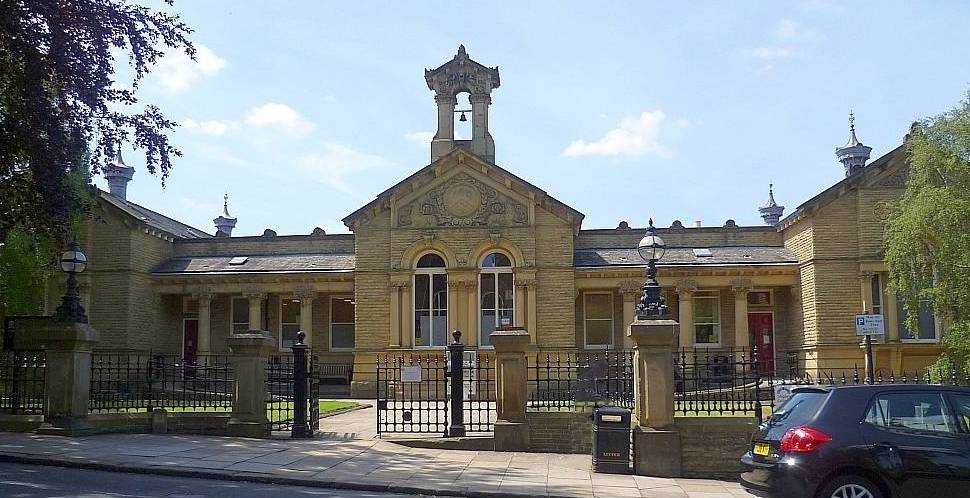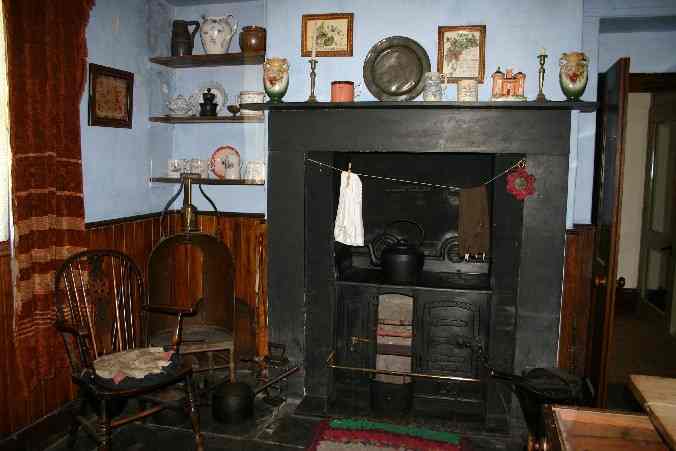I left Yorkshire yesterday and traveled by train over the Pennines (“the backbone of England”) to Lancashire and members of the other side of my family tree. Before leaving, however, I started writing the story of Libby Clegg, a fictitious little girl living and working in Saltaire Village.
Saltaire is a model village designed and built by Titus Salt in the 1800s for the employees in his woolen mill, where he had consolidated all of the stages of woolen worsted production under one roof. Earlier in the century, textiles were produced by cottage industry, but by this time most wool combers, spinners & weavers had moved from their dwellings in the hills and valleys of England into the industrial hubs in either Lancashire or Yorkshire.
Staying as I have been doing in a centrally heated mill worker’s cottage, it took some imagination to picture a 19th century family’s daily life there during a similarly chilly Christmas season. While I had a modern kitchen with an electric stove and oven, a sink with a faucet and drain, a long counter top, and an electric washing machine, it would have been tight quarters and very basic living for Libby and her family, preparing food in a pantry or scullery with just a water pump, drainboard and cement sink, and cooking the meals on an iron hub or in the fireplace. One of the upstairs bedrooms might have had a small coal fire or heating, but the second one probably wouldn’t. And a family of six or more would be living there.
Children living in Saltaire began attending school at four or five. In the early 19th century, churches often provided schools for poor children and from 1833 the government provided the churches with grants to do so. There were also dame schools run by women who taught a little reading, writing and arithmetic while caring for the youngest children while their parents worked. However, neither of these methods used trained teachers. Titus Salt wanted to do better. In 1854 he established the first factory school in the mill dining hall, and in 1868 the purpose-built Saltaire Elementary School opened with one side for girls and the other for boys, and soon after he brought it under the oversight of the local education agency specifically so they would now receive School Inspectors’ visits.

Former Saltaire Factory School, now Shipley College. Photograph by Jacqueline Banerjee, 2011. http://www.victorianweb.org
The new school was built to house 700 “scholars,” as they were called in the teacher’s journals. The main rooms were 20 feet by 80 feet, and the challenge for me as a writer comes in imagining what was likely to be going on inside that huge space. Most of its students would be on the half time system, working in the mill from 6:00 a.m. to 12:30 p.m. one week and 1:15 to 5:30 p.m. the next, with school attendance at the alternate times. This system was loudly condemned by social reformers and educationalists such as Margaret McMillan: “The half-timers’ school is a forlorn Hope – or, at best, it is a place where Hope becomes so very moderate that Ambition dies” (1896, Child Labour and the Half-time System). She had observed that children working in the mill developed a sense of confidence and entitlement from earning a small income that made them less likely to tolerate the harsh discipline necessary to control the large class sizes in the industrial school settings, and their attitude toward learning seemed to go down as their ability to earn money went up.
So how did the mill children learn anything? Well, that is my challenge. My little protagonist does learn to read. Stay tuned to find out how.
Share this post




Having stayed at Saltaire Village and getting a feel for the community, the pollution and the noise from machinery is currently missing. It must have been horrendous with shifts running nearly around the clock. But being in the buildings now and looking out at other buildings lets the visitor get a sense of times past and improvements made for workers in the Industrial Revolution as it developed. Good luck with showing that through the eyes of your protagonist.
Barbara,
You are absolutely correct that I did not touch on the noise of the industrial village . . . I’m sure it must have been deafening inside the mill, and the wagons coming and going with wool, produce, and product, would have left behind a trail of manure and muddy roads. Lots to think about here. Thanks!